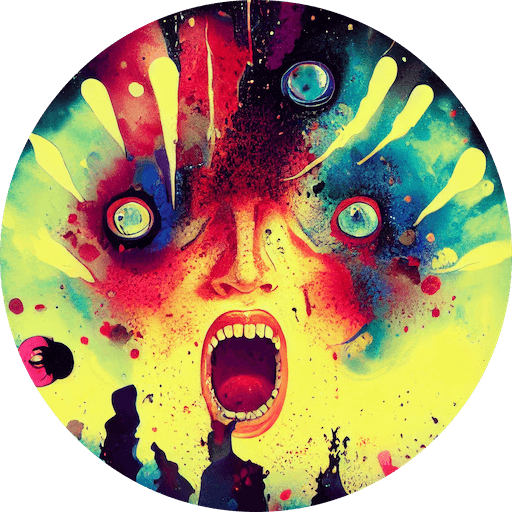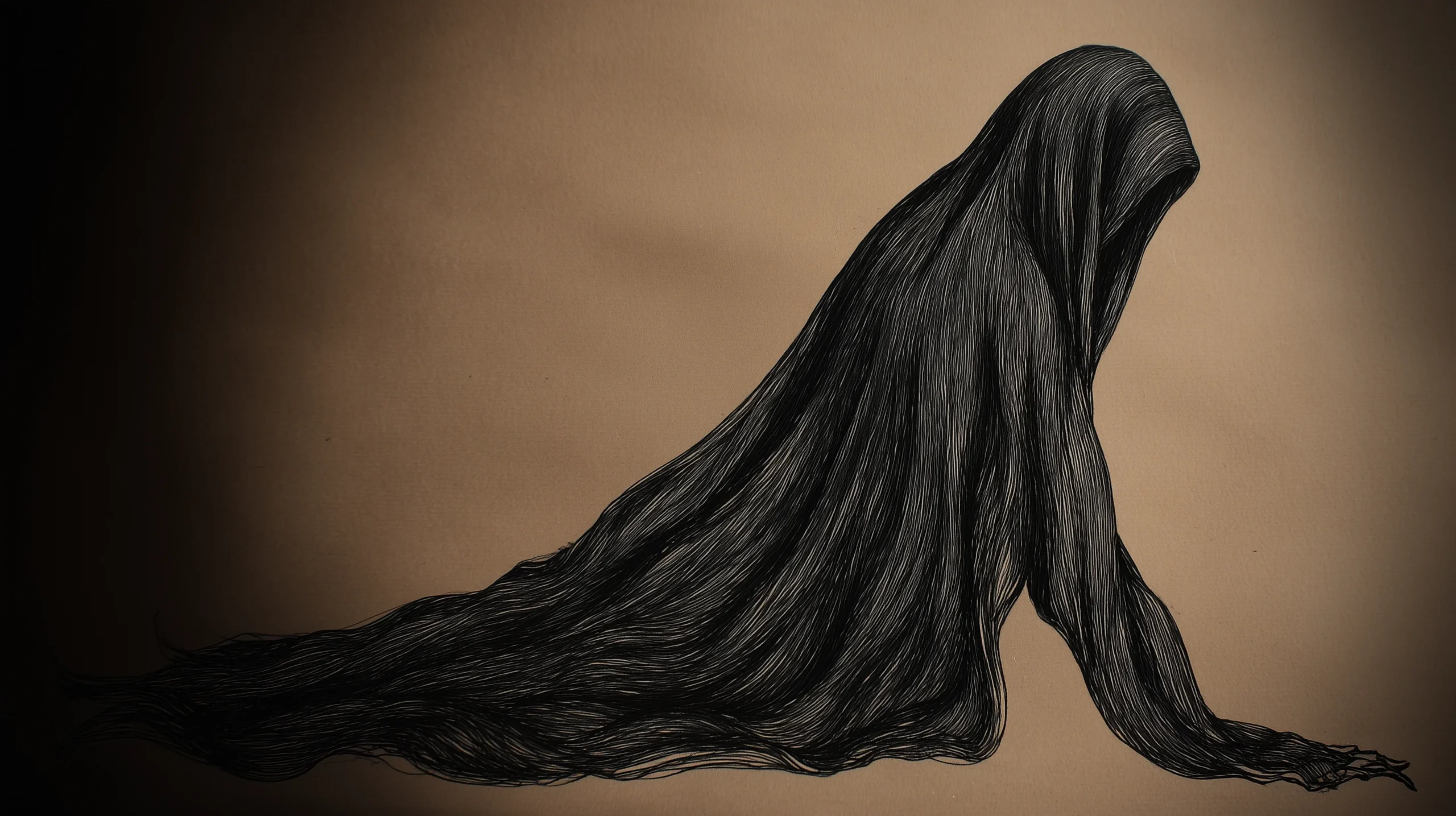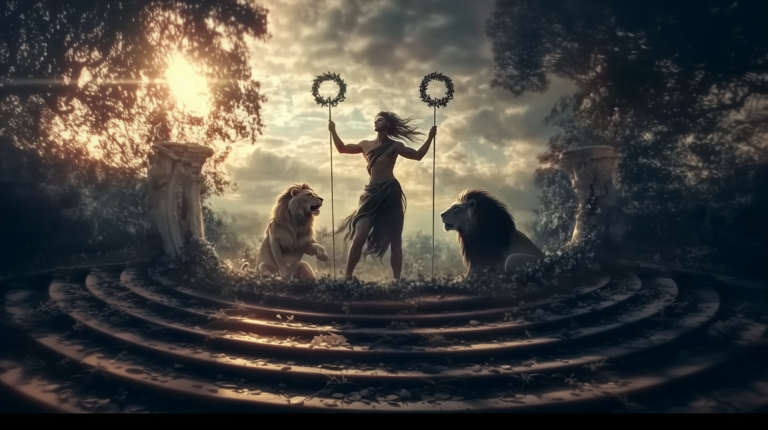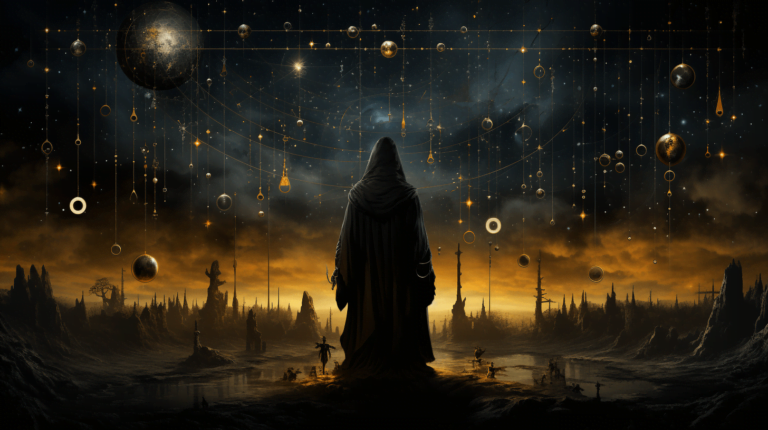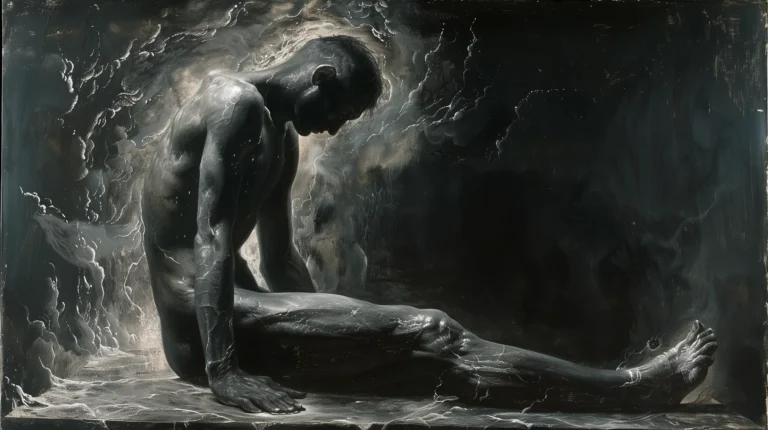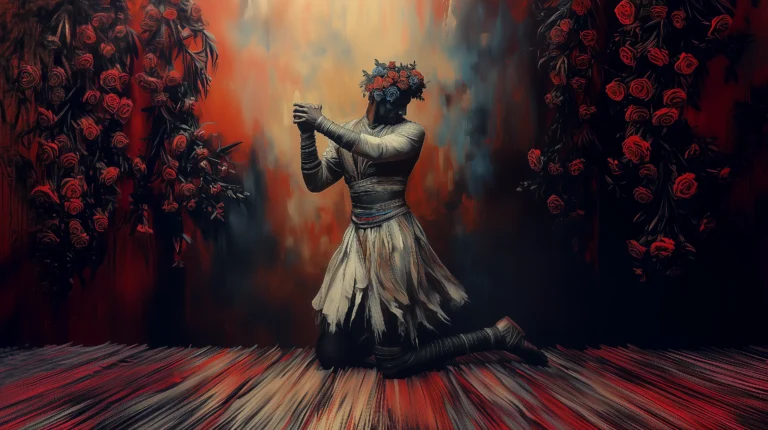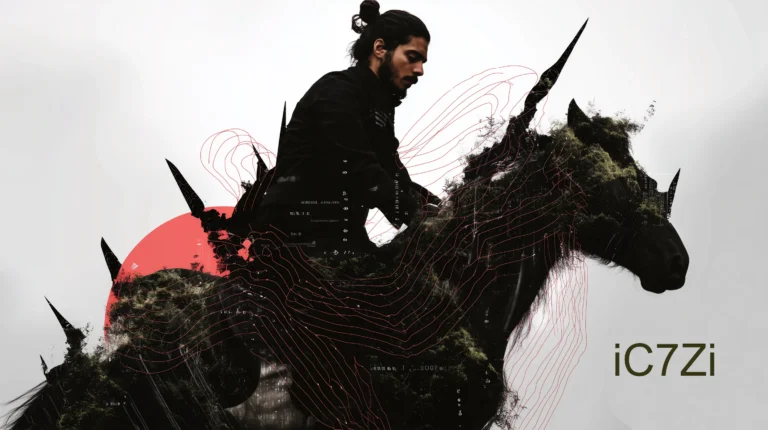Beyond the Wrong Question: Shhh… Death as a Teacher
Last year an estimated 9 million people died of hunger—about 24 600 every day.
In the same twelve months, humanity spent roughly $252 billion on artificial‑intelligence projects.
These two numbers keep colliding in the mind like flint and steel. They spark an apparently obvious question:
“Why can’t we feed the starving first and then reach for the stars?”
Yet the more we chase the right wording, the farther any solution seems to recede. The philosopher Ralph Waldo Emerson warned of this very dynamic in his 1841 essay “Compensation”: every gain carries a hidden cost, every loss hides a gift, and the ledger is written in invisible ink. The ledger, in other words, is inside us.
If so, maybe the first task is not to solve the riddle but to notice that it is the wrong question—the kind that keeps the wheel spinning. When the question dissolves, the habitual answer dissolves with it, and something quieter has room to emerge.
This essay follows four threads:
- the public tension between suffering and progress,
- the private storm of anger that surfaces when you stare at that tension,
- the ancient logic that life and death, good and bad, are inseparable,
- the non‑dual insight that God, consciousness, light, darkness, even “death” are one seamless motion.
Together they suggest that the world’s outer imbalance mirrors an inner one, and that addressing either means addressing both.
The Public Ledger: Hunger vs. AI
On paper, the contradiction is absurd. How can a civilization fund vast neural networks while children waste away for lack of rice? But look closer and the numbers expose something deeper than misallocated money: they reveal our scattered attention.
Modern economies reward whatever holds collective focus. Silicon Valley’s servers hum at three a.m. because tens of millions of us chase faster answers, smoother entertainment, and automated convenience. Meanwhile, the chronic emergencies of famine, drought, or conflict occur in places our screens seldom linger. Money merely follows the beam of awareness.
This is not an excuse. It is a mirror. If the beam is fractured “out there,” perhaps it is because it is already fractured in here.
The Private Ledger: Anger’s Roar
Anyone who sits with that mirror long enough may feel what a recent journal entry described—raw, unfiltered rage:
“I feel so angry, ROARING. Middle finger to existence, God, life, everything. Fuck you all, I am Death.”
Strip the expletives and you still hear a primal howl: Nothing makes sense; burn it down. Psychologists call this a cathartic stage; mystics call it the nigredo or blackening. Either way, the anger is not the enemy. It is the immune system of the psyche responding to contradiction.
In its healthier form, anger insists on honesty:
- Yes, my comfort is entangled with someone else’s misery.
- Yes, behind the AI marvels lurks a warehouse of cobalt mined by children.
- Yes, it hurts to notice—and it should.
But anger burns indiscriminately. Left alone it soon turns its flame on the one who carries it. That is when a second movement is required: silence.
Shhh… Death as a Teacher
After the roar often comes a hush, sometimes recorded in the same notebook:
“Shhh… DEATH… death to every hook, death to every name.”
At first it reads like nihilism. In fact it is closer to Buddhist anatta or the Christian “dark night of the soul.” By shouting “death to every hook,” the writer is not calling for literal destruction but for the fall of compulsive grasping—those mental hooks that cling to identity, ideology, even spirituality itself.
A sketch that accompanied the words shows a faceless, flowing cloak: death as motion without a center. No scythe, no skull—just a wave. The image hints that death is not an event but a current always moving through life, sweeping away forms so new ones can arise.
In that current the personal ego recognizes its limits:
“A small animal, dirty, filthy from earth, claims to understand the ultimate.
That’s a joke.
When I accept defeat—when I say I don’t know—somehow I find something.”
What appears is neither cynicism nor despair but humility: the readiness to learn from what cannot be named.
Emerson’s Law, the Tao Te Ching’s Way
How do we hold both the roar and the hush? Emerson offers a framework: the Law of Compensation. Whatever we push to one extreme will rebound in its opposite. Overspend on tech and starve the poor? The imbalance mutates into social unrest, refugee waves, or quiet corrosion of empathy.
Tao Te Ching — Chapter 41
When a truly wise person hears about the Way,
they start living it right away.When an average person hears of the Way,
they keep it for a while, then let it slip, then pick it up again.When a shallow person hears of the Way,
they burst out laughing—
and that laughter proves the Way is real;
if no one laughed, it wouldn’t be the Way.Old sayings explain it like this:
- The brightest path looks dim.
- Moving forward can feel like falling back.
- The smoothest road is full of bumps.
- The highest virtue feels like a low valley.
- Pure whiteness seems stained.
- Vast goodness looks incomplete.
- Solid character appears fragile.
- True honesty seems to shift like water.
- The biggest square has no corners.
- The largest vessel is slow to finish.
- The loudest sound is almost silent.
- The greatest image has no shape.
The Way hides, without a name,
yet it alone feeds and completes everything that lives.
Both sages say the same thing: reality self‑balances, but rarely on the schedule our egos demand. The ledger will close whether we cooperate or resist, and cooperation begins the moment we admit we do not stand outside the system. There is no ‘out there’ to fix without fixing ‘in here’.
Non‑Dual Synthesis: Screen, Light, Movie
At the deepest layer the wish to “fix” the world melts. Look closely and the old line between God and consciousness dissolves. God, consciousness, light, all are pointers to one reality that no name can capture.
- Light, often called God, is the radiance that allows any experience.
- Screen, consciousness itself, is the open field where experience appears.
- Movie, the world, is every form that flickers on the screen, from hunger and AI to private anger and joy.
Light, screen, and movie seem separate but are one substance. Seeing this unity does not cancel responsibility; it anchors it. Feeding a child and improving an algorithm can rise from the same silent root when we realise they are not two domains.
Clarity means speaking at the level where the question is asked. If someone asks, “How do we reduce hunger today,” it is evasive to reply with cosmic abstractions. Concrete needs call for concrete steps. Deeper questions invite the wider view. The art is to sense the level in play and respond there, not to hide behind metaphysics when bread, medicine, or code is needed.
What, then, is the one reality these words point toward? Every tradition circles it without landing. Some say Brahman, some Tao, some pure awareness. Each term is only a finger. Name it and you split knower from known. Stay silent and the mind still wants a name. The paradox remains: reality is obvious, yet beyond capture.
So, is there a God or not, am I God or not? Such statements add nothing to the equation of living. They keep the mind circling a question that has no answer. What is certain is the interconnection of every particle, every mind, every act. From that certainty action follows: care, creativity, and shared responsibility. All else is wordplay.
Practical Implications: Working from the Inside Out
- Train attention: Each day notice where your mind spends its currency. Newsfeed or neighbor? Market trends or refugee stories? Attention is buying power.
- Transmute anger: When rage arises, give it paper, breath, song, or movement—anything but suppression or blind reaction. Then listen for the silence underneath.
- Accept mortality: Remember every plan—personal or planetary—unfolds on a timer. Acceptance is not passivity; it is clarity about stakes.
- Choose one concrete act: Donate, volunteer, code for good, mentor a child—any gesture that bridges the inner insight to an outer need. Small does not mean minor; it means repeatable.
- Release the question: “Why can’t we feed the hungry before building AI?” is still useful as a koan, a pointer to paradox. Hold it lightly until it evaporates, and let compassionate action arise without the clamor for a final answer.
The Quiet Center
There is a paradox older than language: the more completely a question collapses, the more vividly life answers. The world’s statistics jar us awake; our anger cries out; silence teaches; and the recognition of non‑duality knits the fragments into a single, indestructible cloth.
In that cloth hunger and technology are threads, not rivals.
Your grief for starving strangers and your thrill at new inventions share one origin.
When you see that, the ledger balances itself: giving to the poor becomes as natural as running a model, because both acts express the same unmoving center.
And if someone asks, “What is left when the question is gone?” you can smile and say,
“Just this breath, entering and leaving—nothing missing, nothing extra.”
From such a place, 24 600 daily deaths feel less like an abstract shame and more like a call from your own body. Respond as you would to any pain in the flesh: directly, without drama, because it is you.
That is the quiet center where answers are unnecessary—and deeds begin.
We are not doomed by stupidity or bound to selfishness; we are distracted. The same human mind that codes billion‑dollar algorithms can also feed a village—if its spotlight shifts. Hunger and high technology are not rival stories but pages of one ledger. When we notice that outer imbalance mirrors inner imbalance, the “unsolvable” riddle dissolves. What remains is a clear choice:
- Direct attention where life is thinning.
- Let anger uncover truth, then let silence steady the hand.
- Act at the level that is asking. Cosmic language is no substitute for clean water, nor is policy a substitute for deep inquiry.
- Remember the unity beneath the labels.
The question “Why don’t we feed the hungry first?” fades; the act of feeding begins. In that act we meet our own reflection, and the ledger balances itself—one meal, one line of code, one breath at a time.
“Don’t bend; don’t water it down; don’t try to make it logical; don’t edit your own soul according to the fashion. Rather, follow your most intense obsessions mercilessly.”
― Franz Kafka
Key Findings
- Roughly 9 million people died from hunger or malnutrition last year.
- That is about 25 000 deaths every day—one person every 3–4 seconds.
- Around half of these deaths were children under five.
- About 733 million people (1 in 11 humans) were under‑nourished.
- 295 million were in “crisis” levels of hunger needing urgent aid.
- Conflict zones (Sudan, Gaza, Yemen, Somalia, South Sudan, etc.) saw 7 000–21 000 hunger deaths per day as war blocked food.
- Companies and investors poured about $252 billion into artificial intelligence.
- That equals roughly $700 million every single day.
- Corporate R&D and takeovers: ~$150 billion (building labs, buying AI firms).
- Startup funding (VC & private equity): ~$100 billion.
- Generative AI alone: ~$34 billion (chatbots, image generators, etc.).
- AI‑related mergers & acquisitions: ~$50 billion in deal value.
- United States: ~$109 billion – more than 70 % of all private AI funding.
- China: ~$9 billion.
- United Kingdom: ~$4.5 billion.
- Rest of Europe combined: about $10–15 billion.
- Most other countries saw only a few billion or less.
- Every day the world spends ~$0.7 billion on AI while 25 000 people die of hunger.
- A small fraction of annual AI investment could fund emergency food aid many times over.
- Hunger is rising again after years of progress, driven by conflict, climate shocks, and inequality.
- At the same time, AI investment is rising faster than ever, concentrated in a handful of rich nations and tech giants.
- The two trends highlight a moral question: Can humanity balance high‑tech ambition with basic human survival— or will we let millions starve while chasing the next breakthrough?
Dig deeper: see the attached PDF for the full research and detailed findings.
Disclaimer: This essay and the accompanying research were prepared with the assistance of artificial‑intelligence tools.
